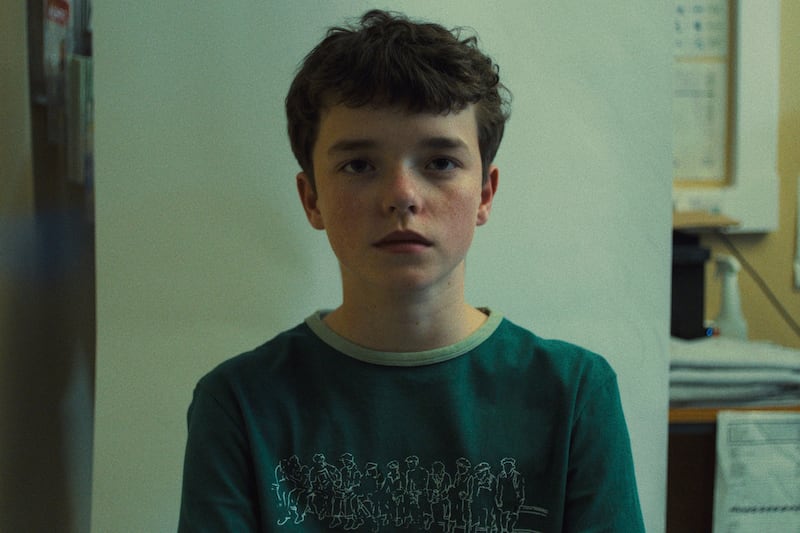A strange, haunting, ever-returning image of Ireland is exhumation. The title of Hilary Mantel’s novel Bring Up The Bodies is surely one that ought to have been nabbed by an Irish writer. It is what we are still doing, literally and figuratively.
Up in Faughart, Co Louth, they have been digging for the body of the undercover British soldier Robert Nairac, killed and secretly buried by the IRA in 1977. Nairac is one the last four of the Disappeared. Along with the remains of Joseph Lynskey, Columba McVeigh and Seamus Maguire his corpse, never laid properly to rest, haunts the bogs and forests of the borderlands.
Over in Tuam, a team of forensic archaeologists is preparing for the excavation of the burial site of the 796 children who died in the mother and baby home. They are mostly in the defunct chambers of the home’s sewage system.
This act of recovery, made possible by the heroic work of local historian Catherine Corless, has been described by Minister for Children Roderic O’Gorman as “one of the most complicated forensic excavations in the world”. A baby has about 300 bones, so the task will involve the recovery of around a quarter of a million individual pieces of human skeletons – tiny fragments of the lives Ireland deemed so illegitimate as to be not worth living, so negligible as to be not worth mourning.
But these are the literal embodiments of a much wider metaphorical unearthing. Contemporary Ireland cannot seem to escape from the necessity to disinter its past. For at least the last 25 years, we have been digging up our society’s secrets, sifting through layer after layer of dark subsoil: the Troubles, industrial schools, Magdalene laundries, mother and baby homes and now the ordinary primary and secondary schools.
All of this is necessary. We owe it to those who were not afforded dignity even in death. We owe it to the living survivors of organised cruelty who continue to search for acknowledgment and, insofar as is possible, restitution of what was taken away from them – whether that was the body of their murdered loved one or their own bodily integrity and childhood innocence. We owe it to ourselves – no decent society can be built on lies about its past.
Yet, however decent the impulse to dig up the bodies might be, it has some strange effects. It makes Ireland more like a Gothic novel than a realist social drama. The landscape is so thick with ghosts and revenants that it can be hard to see the living.
It does not seem accidental that the book that haunts the Irish bestseller lists, refusing to pass over into the literary afterlife is Claire Keegan’s magnificent Small Things Like These. It was published nearly three years ago, but it continues to sell a thousand copies a week, every week.
Keegan’s novel obviously feels urgently of the moment. Yet it is set in 1985, in a bleakly impoverished Ireland radically different from today’s society. At its heart is the Magdalene laundry in New Ross – an institution that in fact closed in 1967.
Nor is Small Things an outlier. Think, for example, of Sebastian Barry’s heart-stopping Old God’s Time, in which the present is sucked back into the black hole of clerical child abuse. Or of the way the shadow of the industrial schools and mother and baby homes falls ever more darkly over John Banville’s crime novels.
Ours, in other words, is a culture whose vision of its own reality is stereoscopic. One eye is focused on the image of the present – an ultra-globalised economy and a post-Catholic multicultural society. The other is engrossed by a continually-emerging past.
That line from the most Irish of plays, Eugene O’Neill’s Long Day’s Journey Into Night, keeps coming back: “The past is the present, isn’t it? It’s the future, too.” Time in contemporary Ireland is not strictly chronological – the 2020s are continually interrupted by the 1960s, 1970s and 1980s. It was possible for an English novelist to write that “The past is a foreign country”. But not for an Irish writer. For us, it’s not an exotic place we might occasionally visit – it insists on visiting us.
A consequence of all of this is that we seem to find it hard collectively to look at the now. We are so intent on the backward glance that what is right in front of us is glimpsed only out of the corner of our eyes.
This is particularly true of the very thing we seem so concerned with in the past: the treatment of children. We’ve watched – or ought to have watched – as the number of homeless children in Ireland has risen from a handful in 1990 to 1,262 in 1999, to 2,505 in 2016, to 3,873 in 2019, to 4,400 now. There is every reason to predict it will pass the 5,000 landmark soon.
This is systemic child abuse on a grand scale. The housing charity Threshold sums it up: “Children who have experienced homelessness are more likely to have health problems, go hungry, experience developmental delays and have higher rates of depression, anxiety and behaviour disorders than other children.”
We know that one of the terrible effects of sexual abuse on children is a profound and debilitating sense of shame. The Office of the Ombudsman for Children has reported these same consequences for children deprived of a stable place to call home – we make them feel ashamed of themselves. Like abuse victims, their shame is enveloped in silence: theirs (they typically lie to their friends) and, collectively, ours.
These are the bones we will be digging up in 30 or 40 years’ time. These are the fragments of lost lives we will be piecing together to try to understand what kind of society allowed this abuse to continue in its peripheral vision. Is it, somehow, that we can only feel the pain of abused and abandoned children in safe retrospect, when it is brought to light after decades underground?
















